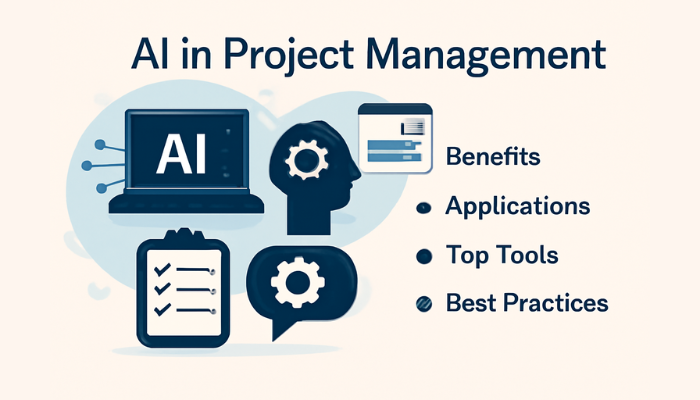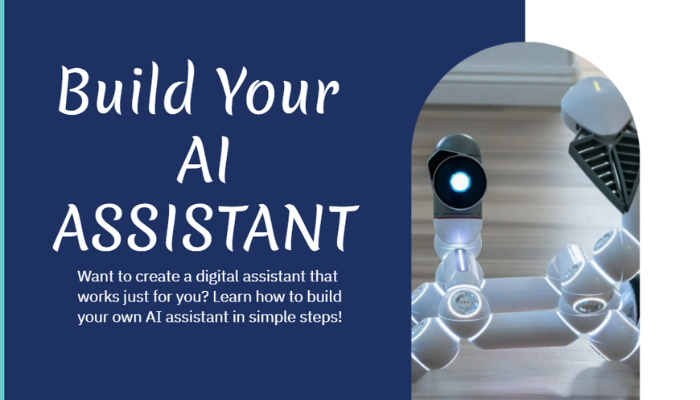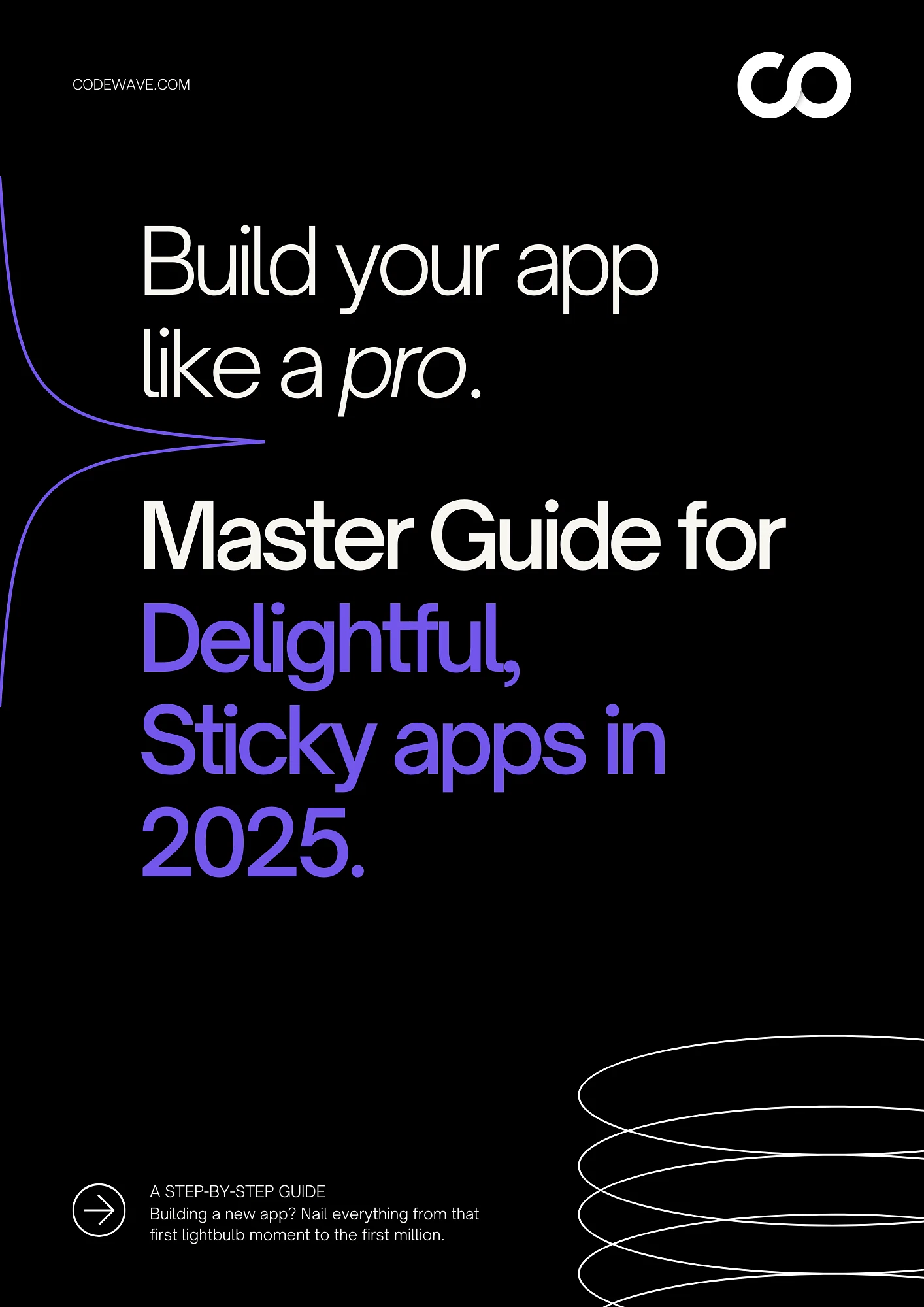Making smart investment decisions in the stock market has always been a challenge. Human emotions, delayed reactions, and information overload often lead to missed opportunities or costly mistakes.
In 2024, the global artificial intelligence market surpassed $184 billion, representing a nearly $50 billion increase from the previous year. This rapid momentum shows no signs of slowing, with projections estimating the market will exceed $826 billion by 2030.
These numbers don’t just reflect hype; they underscore a fundamental shift in how trading is done.
What makes AI stock trading so transformative is its capacity to analyze massive datasets, identify patterns, and make split-second decisions, all without the bias or fatigue that human traders face. As AI becomes more accessible, you’re now able to harness capabilities that were once limited to top-tier financial institutions.
Let’s take a look at how AI transforms Stock trading.
Mechanics of AI Stock Trading
AI-driven strategies now account for over 70% of equity trades in the U.S., showcasing their dominance in modern trading. It’s a collection of powerful methodologies working together to give you a strategic edge in the market.
These methods rely on lightning-fast data processing, real-time decision-making, and adaptive algorithms that learn from historical and live market behavior.
- Quantitative Trading: Uses statistical models and historical data to identify profitable opportunities. AI can process years of price data in seconds, finding subtle correlations that most traders would overlook.
- Algorithmic Trading: Involves pre-programmed instructions for buying and selling. AI continuously optimizes strategies based on live market feedback, ensuring that your trades adapt to evolving market conditions..
- High-Frequency Trading (HFT): Executes thousands of trades per second. AI enables predictive decision-making at microsecond intervals, giving you the upper hand in ultra-competitive environments.
- Automated Trading: You set the rules AI enforces them. Whether you’re asleep or managing other tasks, your trades stay active and aligned with your strategy.
- Arbitrage Trading: AI scans multiple markets in real time to detect price discrepancies. It executes profitable trades before human traders can even react.
AI Trading Tools and Techniques
Behind every successful AI trading strategy is a toolkit filled with intelligent software and automation. These tools not only help you trade faster, they make your entire trading process smarter and more adaptive.
Behind every high-performance AI trading strategy is a smart ecosystem of tools that streamline your decision-making and increase your edge. These aren’t just optional add-ons they’re essential components that help you turn raw data into insight, and insight into action.
- Portfolio Managers: AI-powered systems assist with asset allocation, diversification, and portfolio rebalancing. They track market conditions in real time and adjust your positions automatically to minimize risk and maximize returns.
- Trading Robots: Also known as “bots,” these programs follow a set of algorithms to execute trades without human input. Advanced bots even learn from new data, improving over time to make more refined decisions.
- Signals: AI-generated alerts inform you of potential buy or sell opportunities based on a mix of technical indicators, market news, and behavioral data. Some platforms even allow you to customize signals for specific assets or trading styles.
- Strategy Builders: These tools help you design, test, and deploy trading strategies using historical data. They allow you to simulate how your strategies would perform in different market conditions before you risk real capital.
Top AI Trading Tools You Can Use Right Now
Now that you’ve explored the different categories of AI trading tools, let’s look at real platforms putting those capabilities into action. Here’s a deeper dive into some of the most impactful AI platforms available today.
1. Trade Ideas
Trade Ideas uses a proprietary AI engine called Holly, which runs millions of backtests every night to discover statistically sound trading opportunities. The system then delivers real-time suggestions during market hours based on market movements, patterns, and probability models.
Why it’s powerful: Holly acts as a virtual trading assistant that learns from historical market behavior and adapts daily. You get actionable trade ideas, risk management levels, and confidence ratings. It also integrates with broker platforms, enabling automated execution of AI-generated signals.
How you can use it: You can either manually review the AI’s trade ideas or set up auto-trading with risk controls. For example, if Holly identifies a bullish breakout pattern that historically delivers 2.5% returns in two days, the system can notify you or execute that trade with preset stop-losses.
Ideal for: Active traders, swing traders, technical analysts.
2. MetaTrader 5 with AI Plug-ins
MetaTrader 5 (MT5) is a popular multi-asset trading platform that allows algorithmic trading through Expert Advisors (EAs). By integrating AI plug-ins or linking your own machine learning models via APIs, you can automate complex strategies that evolve over time.
Why it’s powerful: It gives you deep control over every logic layer in your strategy. AI can be embedded to identify patterns, adjust parameters, or change risk exposure in real time based on news sentiment, volatility, or market anomalies.
How you can use it: You might create an EA that tracks economic indicators like inflation data and adjusts your currency pair exposure accordingly. Or you could connect an external TensorFlow model to dynamically select strategy logic based on recent price action.
Ideal for: Forex traders, quants, developers seeking platform flexibility.
3. Kavout
Kavout provides an AI-powered stock rating tool called the K Score, which evaluates stocks based on multiple signals technical indicators, earnings data, sentiment analysis, and predictive modeling to rank their future performance potential.
Why it’s powerful: Kavout combines fundamental and technical analysis with machine learning, allowing you to go beyond basic filters like P/E ratios or moving averages. The K Score evolves based on market shifts and behavioral data, helping you stay ahead of conventional research.
How you can use it: If you’re looking to build a watchlist, you can use Kavout to filter stocks with high K Scores in a specific sector, then validate those picks using your own due diligence or AI strategies.
Ideal for: Portfolio managers, fundamental investors, equity researchers.
4. Alpaca
Alpaca is a developer-first trading platform offering commission-free stock trading APIs with full access to real-time data, paper trading, and broker execution. It’s commonly used to deploy custom AI models in live trading environments.
Why it’s powerful: It bridges the gap between data science and trading. You can use Python to train an AI model say, one that predicts stock movements based on earnings surprise and integrate it directly into Alpaca for automated execution.
How you can use it: Use a Jupyter notebook to create a model that scores stocks every morning, then connect it to Alpaca to place limit orders for the top three scoring stocks with a trailing stop-loss setup.
Ideal for: Python developers, fintech startups, and algorithmic trading engineers.
5. Numerai Signals
Numerai Signals allows you to submit your own trading signals, built using any dataset or model, to a decentralized hedge fund. The platform evaluates your signals and blends them into their live trading systems.
Why it’s powerful: It gives you real hedge-fund-level data infrastructure and feedback loops without needing to manage capital or execution. If your signals perform well, you earn cryptocurrency rewards, aligning incentives with performance.
How you can use it: You could train a machine learning model that predicts stock returns using macroeconomic data, submit the daily predictions as signals, and track your performance against the fund benchmark on Numerai’s dashboard.
Ideal for: Data scientists, machine learning researchers, independent quants.
Pairing the right tools with a clear understanding of their roles allows you to automate smarter, trade faster, and adapt confidently to market shifts. With AI trading tools, you no longer need to be glued to your screen 24/7. The system works for you, intelligently and efficiently.
Practical Applications of AI in Stock Trading
The beauty of AI lies in its real-world utility, and in trading, those applications are vast, varied, and growing rapidly. You’re not just adopting a new technology; you’re integrating an intelligent system that enhances nearly every aspect of your investment strategy.
1. Data Mining
AI-powered data mining allows you to extract meaning from massive volumes of financial and non-financial data. It scans through historical stock prices, balance sheets, trading patterns, earnings calls, global events, and even alternative datasets like satellite imagery or shipping data.
Why it matters:
You can’t manually process millions of data points fast enough to spot micro-opportunities or subtle anomalies. AI, on the other hand, grows on data scale and helps you identify trends that would otherwise stay hidden.
How it helps you:
Imagine you’re evaluating hundreds of mid-cap pharma stocks. Instead of reading through every earnings call transcript, AI flags a pattern where unexpected R&D spending increases often lead to price jumps within 45 days. That insight can become your early signal to buy in before institutional investors catch up.
2. Sentiment Analysis
AI sentiment analysis tools read and interpret digital chatter across news articles, financial blogs, social media platforms, forums like Reddit, and even CEO interviews. They analyze tone, emotion, and volume to gauge how the market “feels” about a company or sector.
Why it matters:
Markets move on emotion as much as logic. If enough people believe a stock is going to rise (or fall), their actions make it so. AI allows you to quantify that mood in real time, something no traditional chart can show you.
How it helps you:
AI tools trained in NLP (Natural Language Processing) could detect the unusual surge in bullish sentiment across retail communities days before the breakout. If you’d had that signal, you could have prepared to ride the wave or avoid being crushed by it.
3. Real-Time Market Analysis
AI systems are capable of digesting live feeds stock tickers, breaking headlines, regulatory updates, global indices and translating that firehose of input into actionable insights within milliseconds.
Why it matters:
In volatile markets, timing is everything. Being minutes late can cost thousands. AI helps you cut through the noise and react to market-shifting events as they unfold.
How it helps you:
Say a bank unexpectedly announces a policy change during trading hours. While most traders are still parsing the press release, your AI system has already interpreted the update, assessed historical market reactions, and suggested hedging high-risk positions all in real time.
4. Predictive Modeling:
AI builds models using machine learning to analyze historical and current data, identifying conditions that typically precede price trends, earnings surprises, or market reversals. These models continuously learn and refine themselves.
Why it matters:
Forecasting the market is hard but probabilistic forecasting gives you a clearer edge. You may not predict the exact move, but AI tells you which direction is statistically more likely and helps quantify the risk.
How it helps you:
Let’s say you want to understand how Tesla typically behaves before earnings. Your AI model finds that over the past 12 quarters, a certain pattern of trading volume plus social media buzz two days before earnings led to a post-earnings rally 78% of the time. That insight can help you structure your positions more confidently.
5. Risk Modeling and Mitigation
AI-powered risk engines assess your portfolio for vulnerabilities. They simulate adverse scenarios market crashes, regulatory changes, sector disruptions and calculate how each one would impact your holdings.
Why it matters:
Emotional reactions to market dips are often costly. AI gives you a data-backed view of your risk profile so you can make calm, informed decisions even during turbulence.
How it helps you:
If your portfolio is heavily weighted in tech, your AI model might show that a 0.5% Fed rate hike could reduce your overall returns by 12%. Based on this, it suggests reallocating part of your holdings into lower-beta sectors or adding options for downside protection before the market even reacts.
By turning raw data into actionable insights, AI allows you to trade reactively and proactively.
Also Read: A Comprehensive Guide to Business Process Automation
Benefits of Integrating AI in Stock Trading
When you bring AI into your trading strategy, you’re not just adding speed, you’re adding intelligence. The benefits go far beyond automation.
- Reducing Research Time and Improving Accuracy: Manual research can take hours. AI reduces this to minutes, delivering precise insights by scanning thousands of data points, including financial news, charts, and economic indicators, in real-time.
- Predicting Patterns Using Sentiment Analysis: AI helps you catch the emotional undercurrents driving market behavior. If social sentiment starts turning negative around a stock, AI flags it before prices fall.
- Stronger Risk Management Through Predictive Modeling: By identifying early warning signs, AI can recommend risk-adjusted trades, stop-loss strategies, or even suggest when to exit a position entirely.
- Lowering Costs by Reducing Overhead Expenses: With automated systems handling analysis and execution, you save on staffing, trading desk expenses, and time. You can operate lean while staying competitive.
Ultimately, AI gives you what every trader wants: an edge and the ability to move with both speed and confidence.
Looking to build a fast, scalable trading dashboard?
Codewave delivers custom web apps with real-time data, intuitive design, and seamless integrations built around your business logic. Build with Codewave.
Challenges and Risks in AI Stock Trading
As powerful as AI is, it’s not without its drawbacks, and being aware of these risks can help you navigate the market more responsibly.
- Less Transparency: Many AI models, especially deep learning systems, operate as “black boxes.” You might get a recommendation or see a trade executed without fully understanding the reasoning behind it, which raises concerns about accountability.
What you can do:
You can use explainable AI (XAI) tools that break down the decision-making process in plain terms. You can also set up human-in-the-loop systems, giving you the final say before any high-impact decision is made.
- Dependence on Historical Data: AI learns from the past but markets evolve. If an event occurs that isn’t represented in historical data (like a pandemic or sudden regulation), AI models can misfire or make inaccurate predictions.
What you can do:
Feed your AI more than just historical charts. Integrate live news sentiment, economic signals, and social data to help it react to real-world shifts. And don’t forget to retrain your models regularly so they stay sharp.
- Potential for Larger-Scale Errors: Because AI trades at high volume and speed, even a small coding flaw can lead to massive financial losses within minutes. Flash crashes, for instance, have been linked to algorithmic misfires.
What you can do:
Set up safety layers like kill switches and trade limits. You should always test your models in a simulated environment before going live, and build in checkpoints to catch mistakes early.
- Cybersecurity Concerns: AI systems are often connected to cloud platforms and third-party APIs. Without proper security, they’re vulnerable to hacking, data breaches, and unauthorized trades.
What you can do:
Protect your platform with end-to-end encryption, MFA (multi-factor authentication), and real-time security alerts. Run regular audits and adopt a zero-trust approach to all integrations.
Balancing AI’s capabilities with strong human oversight and robust testing is essential to avoid unintended consequences.
Also Read: Guide to OpenAI’s Agentic Framework for AI Development
Impact of AI on the Future of Stock Trading
AI is not just shaping the present, it’s fundamentally altering the future of how you trade.
- Human Discretion vs. AI: While AI offers unmatched speed and precision, it lacks emotional intelligence and ethical reasoning. Human traders still play a crucial role in interpreting nuanced scenarios, regulatory shifts, and moral implications that machines can’t grasp.
- Sustainable Future: The future of trading likely lies in hybrid systems. Imagine AI handling data-intensive tasks like scanning the global markets or identifying arbitrage opportunities while you focus on strategy, oversight, and big-picture thinking. This partnership will allow for greater accuracy without sacrificing human intuition.
- Democratizing Access: What was once the domain of elite hedge funds is now available to individual traders through platforms offering AI-based tools, robo-advisors, and real-time analytics.
The traders of tomorrow won’t just use AI, they’ll collaborate with it.
Codewave crafts AI-driven trading platforms with explainable models, real-time data pipelines, and secure architecture designed in close collaboration to align every layer with your trading goals.
Let’s build smarter, together..
How Codewave Helps You Build Smarter AI Trading Solutions
Mastering the complexities of AI-driven stock trading requires advanced technology and a partner who understands the nuances of both finance and innovation. Codewave, a design-led technology development services company, offers a suite of solutions tailored to enhance your trading strategies.
1. Custom AI & ML Development
Codewave specializes in building custom AI solutions, including Generative AI tools, conversational bots, and self-improving systems that lead to immediate, visible business impact. These tools can analyze vast datasets, identify patterns, and make real-time decisions, giving you a competitive edge in the stock market.
2. Fintech Expertise
With a strong foothold in the fintech sector, Codewave has experience in developing POS solutions, robo-advising platforms, stock trading applications, lending systems, and wealth management tools. Our design thinking-led approach ensures that the solutions are user-centric and aligned with your business goals.
3. Gamified Trading Platforms
Understanding the importance of user engagement, Codewave has developed gamified trading platforms that make investing more accessible and enjoyable. For instance, we designed a mobile app that simplifies the complex world of stock trading, making it an easy and engaging experience that encourages more people to participate in the stock market.
4. Conversational AI for Enhanced User Interaction
Codewave’s conversational AI platform development services enable the creation of intelligent, human-like chatbots and voice assistants. These tools can provide real-time support, personalized customer interactions, and automate repetitive tasks, enhancing the overall user experience in trading platforms.
5. Rapid Prototyping and Deployment
Time is of the essence in the fast-paced world of stock trading. Codewave offers rapid prototyping and deployment services, ensuring that your AI trading solutions are developed and launched efficiently, keeping you ahead of the competition.
By partnering with Codewave, you gain access to a team of experts dedicated to transforming your stock trading operations through innovative AI solutions. Their comprehensive services ensure that your trading platform is not only technologically advanced but also user-friendly and aligned with your strategic objectives.
Conclusion
AI has transformed the stock trading ecosystem from how you analyze data to how you execute trades. What once required teams of analysts and hours of research can now be done in seconds using intelligent systems that adapt, learn, and optimize in real time.
But as powerful as AI is, it’s not a one-size-fits-all solution. That’s where expert partners like Codewave come in, helping you build, scale, and refine AI-powered platforms that are fast, efficient, and built for the future.
Transform Data into Decisions. Work with Codewave to develop AI solutions that make every trade smarter, faster, and safer. Contact us now!
Codewave is a UX first design thinking & digital transformation services company, designing & engineering innovative mobile apps, cloud, & edge solutions.







